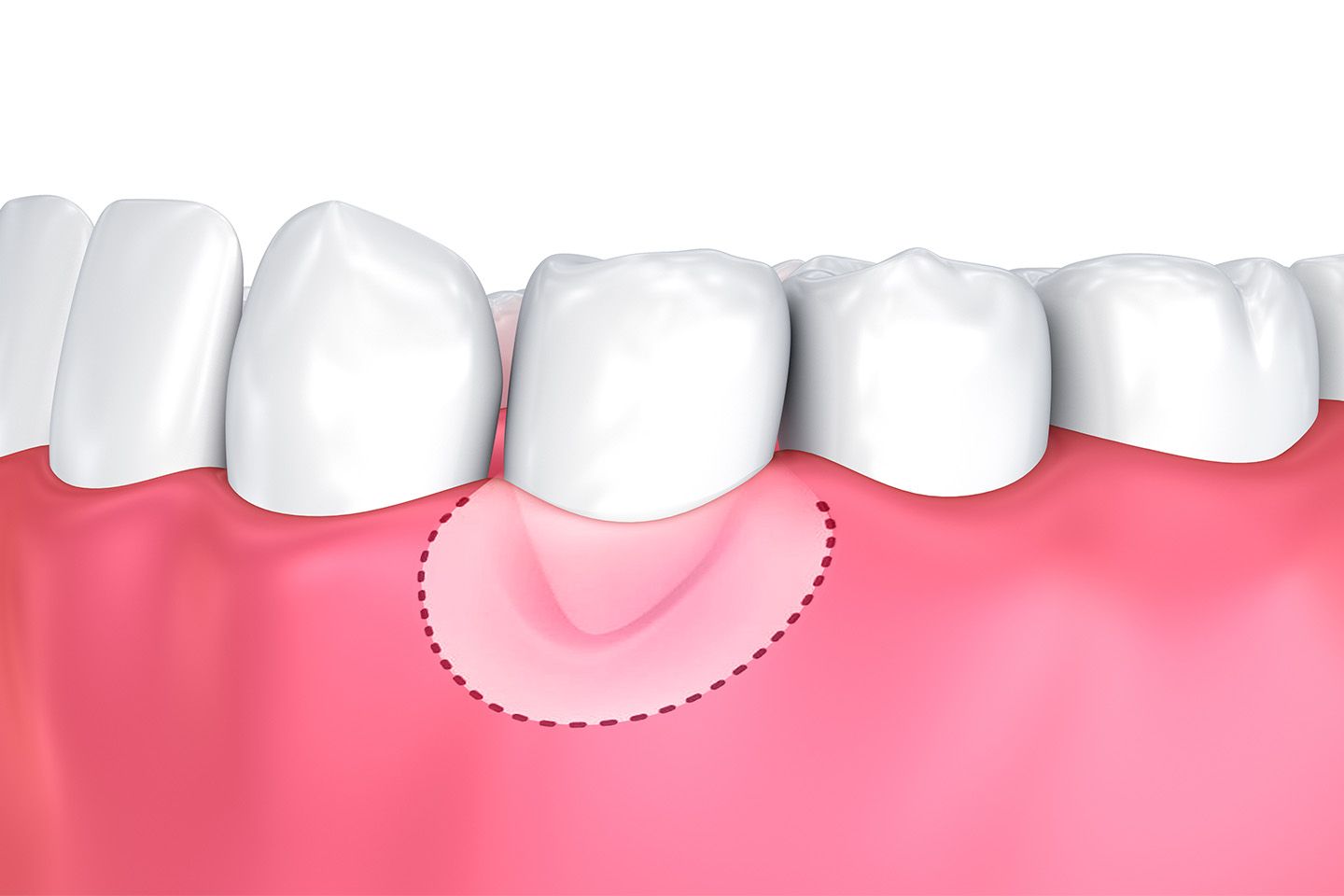Restore Receded Gums with a Soft Tissue Graft
Receding gums can cause sensitivity and affect the health and appearance of your smile. When left untreated, gum recession can also lead to decay and eventually tooth loss. A gum graft is a simple outpatient procedure which can restore lost tissue and protect the roots of your teeth. Dr. Victor R. Siegel performs gum grafting at our practice in Rockville, MD. We also offer a range of sedation options to ensure you are comfortable and relaxed during your gum graft procedure.

Understanding the Problem
Gum recession is a gradual process. Many patients at our Rockville dental office do not notice their gums have receded until they start experiencing uncomfortable symptoms. Most often caused by gum disease, recession can also stem from hormonal changes and conditions such as diabetes. Common signs of receding gums include:
- Sensitive teeth
- Exposed roots
- Gums that bleed when brushing or flossing
- Teeth which appear longer
However, for some patients, gum recession occurs without any symptoms. The best way to prevent recession is to attend regular cleanings and exams at our office. If you have noticed signs of gum recession, Dr. Siegel can examine your smile and determine if you need a gum graft.
Preparing for Your Gum Graft
Before your gum graft, Dr. Siegel can sit down with you to discuss your different graft and sedation options. We can also provide you with instructions on how to prepare for your recovery. Since most patients use sedation during gum grafting, we recommend arranging for a ride to and from our office on the day of your appointment.
What to Expect during Your Procedure
On the day of your gum grafting surgery, we will first provide local anesthesia to numb the treatment area. We can also administer sedation at this time. Depending on your needs, there are several types of gum grafts available.
The right technique for you will depend on the extent of recession, as well as the overall health of your gums.
The most common method is a connective tissue graft which uses a small flap of skin taken from the roof of the mouth. However, for some patients, Dr. Siegel can also perform pedicle grafts, which use tissue from near the area needing repair. The right technique for you will depend on the extent of recession, as well as the overall health of your gums.
Recovering from Your Gum Graft
Gum grafting is an outpatient procedure, so you can return home shortly after treatment. We may have you stay in the office for an hour or two as sedation wears off to make sure there were no complications from the graft.
Most patients fully recover from gum grafting surgery within one to two weeks. During this time, we recommend eating soft, cool foods to avoid irritating the treatment area, such as:
- Yogurt
- Scrambled eggs
- Cottage cheese
- Ice cream
- Cooked vegetables
- Gelatin
You should avoid directly brushing or flossing the area until the graft has fully healed. To maintain your oral health, we may provide you with an antimicrobial mouthwash to use during recovery. Some discomfort is normal after a gum graft. Most patients are able to manage any pain with over-the-counter medications.
Protect Your Oral Health
When left untreated, gum recession can lead to a range of other conditions and have a serious impact on the health of your smile. If you are struggling with receding gums or another gum-related concern, Dr. Siegel provides a variety of periodontal treatments, including safe, effective gum grafts. Learn more by contacting our office online or calling (301) 963-4330 today.


